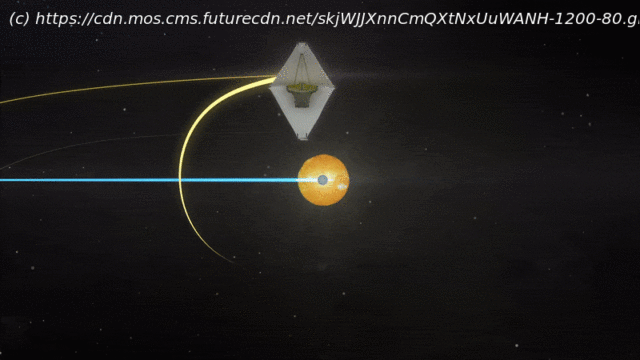After a month in space, the Webb Telescope — the most powerful space telescope ever launched — has reached its permanent cosmic address, 930,000 miles (1.5 million kilometers) from Earth.
The most powerful space telescope ever launched just fired its thrusters to reach its permanent cosmic address. With this final course adjustment complete, the James Webb Space Telescope (JWST) is now orbiting around the sun at a distance of nearly 1 million miles (1.5 million kilometers) from Earth. Around 2 p.m. EST on Monday (Jan.24), ground operators guided the telescope through a final mid-course correction burn, fine-tuning JWST’s final orbital position for its science mission, NASA representatives announced in a briefing. For approximately five minutes, the team fired JWST’s station-keeping thruster to gently nudge the observatory into place without overshooting its destination; by comparison, the “big burn” course correction that was performed with a different thruster on Dec.25 was for a much more dramatic maneuver and lasted over 60 minutes, Keith Parrish, JWST Observatory Manager at NASA’s Goddard Space Flight Center (GSFC) in Greenbelt Maryland, said at the briefing. Related: Building the James Webb Space Telescope (photos) When the $10 billion Webb Telescope launched on Dec.25,2021, it blasted off from South America on Earth’s sun-facing side and followed a curved trajectory to reach its destination, known as the second Lagrange Point, or L2. There are five Lagrange Points around Earth and the sun; objects at these positions rest in a gravitational equilibrium, where the pull of gravity and centrifugal force from the object’s orbit “park” its body in place, according to NASA. “The way I see it in my head is like a Pringles potato chip,” Jane Rigby, JWST Operations Project Scientist, said at the briefing. In the potato chip scenario, Webb is perpetually inching up one side of a curved chip and then gently falling back down and traveling up the other curving side, repeating the movement over and over again “for the life of the mission,” Rigby said.






